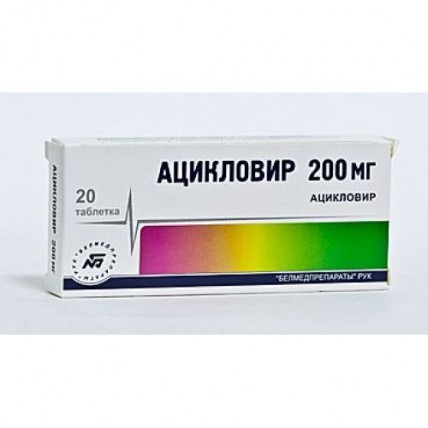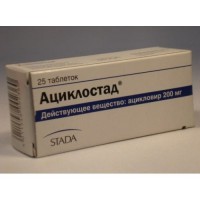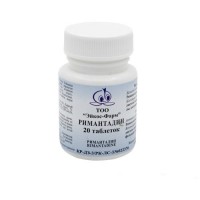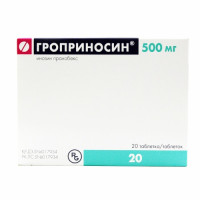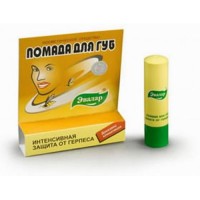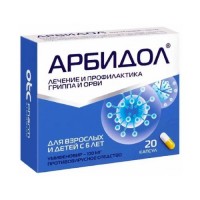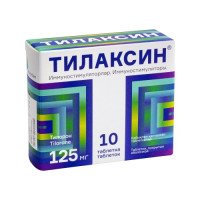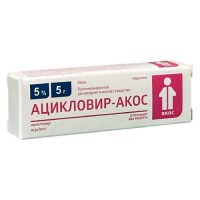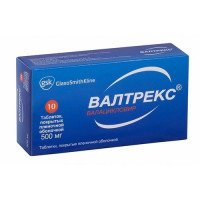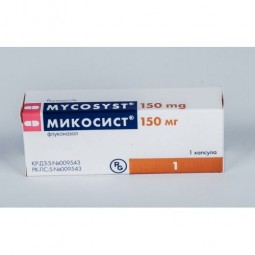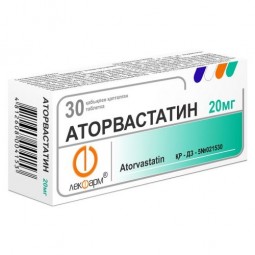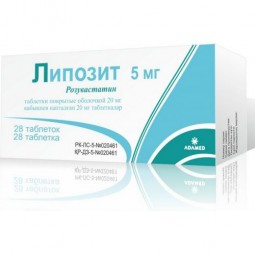Acyclovir 200 mg (20 tablets)
- $3.00
Out Of Stock
The instruction for medical use of ACYCLOVIR medicine the Trade name Acyclovir the International unlicensed name Acyclovir Dosage Form of the Tablet, 200 mg Structure One tablet contains active agent - acyclovir of 200 mg, excipients: povidone, calcium stearate, potato starch. The description of the Tablet of white or almost white color, ploskotsilindrichesky, with risky on the one hand and a facet. Pharmacotherapeutic group Antiviral drugs for system use. Nucleosides and nucleotides. Acyclovir. The ATX J05AB01 code the Pharmacological Pharmacokinetics Bioavailability properties of acyclovir at reception of 200 mg inside makes 15-30%. Food has no considerable impact on absorption of drug. When prescribing acyclovir inside in a dose of 200 mg of 5 times a day the maximum concentration makes 0.7 mkg/ml. Communication with proteins of plasma – 9-33%. Well gets into bodies and fabrics, including into a brain, kidneys, lungs, a liver, watery moisture, plaintive liquid, intestines, muscles, a spleen, breast milk, a uterus, a mucous membrane and secretion of a vagina, sperm, amniotic liquid, contents of herpetic bubbles. Passes through a blood-brain barrier, concentration in cerebrospinal fluid makes 50% of that in blood. Gets through a placental barrier and it is allocated with breast milk. It is metabolized in a liver with formation of a 9-karboksimetoksimetilguanin. Elimination half-life makes 3.3 h. It is removed, generally by kidneys by glomerular filtration and canalicular secretion, and 14% – in not changed look. Less than 2% of drug are removed with a stake. At elderly people the clearance of acyclovir decreases in parallel with decrease in clearance of creatinine with age, however elimination half-life of acyclovir changes slightly. At patients with chronic kidney disease the elimination half-life of acyclovir averaged 19.5 h. When carrying out a hemodialysis the average elimination half-life of acyclovir was 5.7 h, and concentration of acyclovir in plasma decreased approximately by 60%. A pharmacodynamics Acyclovir – antiviral drug, a synthetic analog of a nucleoside of thymidine. In the infected cells containing a virus thymidinekinase there is a phosphorylation and transformation in acyclovir monophosphate. Under the influence of acyclovir guanylate cyclase, monophosphate will be transformed to diphosphate and under the influence of several cellular enzymes – to triphosphate. The sharp selectivity of action and hypotoxicity for the person are caused by lack of a thymidinekinase for formation of acyclovir of triphosphate in intact cells of a macroorganism. Acyclovir triphosphate, being built in synthesized by the DNA virus, blocks reproduction of a virus. The specificity and very high selectivity of action are also caused by primary accumulation of drug in the cells affected with a herpes virus. It is highly active concerning the Herpes simplex 1 and 2 viruses of type, Varicella zoster, Epstein's virus - Barrel. It is moderately active concerning a cytomegalovirus. In herpes prevents formation of new elements of rash, reduces the probability of skin dissimination and visceral complications, accelerates formation of crusts, reduces pain in a sharp phase of the surrounding herpes. Has immunopromoting effect. Indications - treatment of a herpes infection of skin and the mucous membranes caused by a herpes simplex virus, including primary and recurrent genital herpes, including at patients with disturbance of immunity are treatment of the infections caused by the Varicella zoster viruses (chicken pox and the surrounding herpes) - prevention of a recurrence of the infections caused by the Herpes simplex 1 and 2 virus of type, Varicella zoster in patients with the normal immune status and with an immunodeficiency the Route of administration and doses Acyclovir of a tablet can be accepted at meal time as meal does not break substantially its absorption. Tablets should be washed down with a full glass of water. Adults Treatment of the infections caused by a herpes simplex virus the Recommended dose of Acyclovir makes on 200 mg (1 tablet) of 5 times in every day 4 hours, except for night time. Usually the course of treatment makes 5 days, but can be prolonged in heavy primary infections. In case of the expressed immunodeficiency (for example, after bone marrow transplantation) or at disturbance of absorption from intestines the dose of Acyclovir can be increased up to 400 mg (2 tablets) of 5 times a day. Treatment needs to be begun as soon as possible after developing of an infection, at a recurrence it is already recommended to appoint drug in a prodromal stage or at emergence of the first elements of rash. Prevention of a recurrence of the infections caused by a herpes simplex virus with the normal immune status For prevention of a recurrence of the infections caused by a herpes simplex virus the recommended dose of Acyclovir makes on 200 mg 4 times a day (each 6 hours). Many patients suit more convenient scheme of therapy on 400 mg 2 times a day (each 12 hours). In some cases there are effective lower doses of Acyclovir on 200 mg 3 times a day (each 8 hours) or 2 times a day (each 12 hours). At some patients the interruption of an infection can happen at reception of a total daily dose of 800 mg. Treatment by Acyclovir should be interrupted periodically for 6-12 months for identification of possible changes during a disease. Prevention of the infections caused by a herpes simplex virus in patients with an immunodeficiency For prevention of the infections caused by a herpes simplex virus at patients with an immunodeficiency the recommended dose of Acyclovir makes on 200 mg 4 times a day (each 6 hours). In case of the expressed immunodeficiency (for example, after bone marrow transplantation) or at disturbance of absorption from intestines the Acyclovir dose for intake can be increased up to 400 mg of 5 times a day. Duration of a preventive course of therapy is defined by the period duration when there is a risk of infection. The recommended dose of Acyclovir makes treatment of chicken pox and the surrounding herpes For treatment of chicken pox and the surrounding herpes on 800 mg (4 tablets) of 5 times a day, the drug is taken by each 4 hours, except for the period of night time. The course of treatment makes 7 days. It is necessary to appoint drug as soon as possible after the beginning of an infection as in this case treatment is more effective. With the expressed immunodeficiency (for example, after bone marrow transplantation) or at patients with disturbance of absorption from intestines it is more preferable to apply acyclovir to treatment of patients intravenously. Treatment of chicken pox at immunocompetent patients should be begun within 24 hours after appearance of rash. Children to Children are younger than 6 years purpose of the tableted drug forms is not recommended. Children are more senior than 6 years Treatment of the infections caused by a herpes simplex virus On 200 mg (1 tablet) of 5 times a day (each 4 hours) except for the period of night time. The course of treatment makes 5 days. In case of the expressed immunodeficiency (for example, after bone marrow transplantation) or at disturbance of absorption from intestines the dose can be increased up to 400 mg of 5 times a day. Prevention of the infections caused by a herpes simplex virus in children with an immunodeficiency On 200 mg 4 times a day (each 6 hours). In case of the expressed immunodeficiency – on 200 mg of 5 times a day. Treatment of chicken pox of 800 mg, accepted 4 times a day. More precisely the dose can be defined at the rate of 20 mg/kg of body weight (but no more than 800 mg) 4 times a day. The course of treatment makes 5 days. Prevention of a recurrence of the infections caused by a virus of a herpes simplex and treatment of the surrounding herpes at children with normal indicators of immunity Data are absent. According to the available very limited data, for treatment of children 6 years with the expressed immunodeficiency are more senior (number of cells of CD4+ & lt, 200/mm3, early clinical manifestations of HIV infection and a stage of AIDS) it is possible to apply the same doses of Acyclovir, as to treatment of adults. Patients of advanced age At advanced age there is a decrease in clearance of acyclovir in an organism to decrease in clearance of creatinine. Patients of advanced age have to receive enough liquid against the background of reception of high doses of Acyclovir inside, in a renal failure at them it is necessary to resolve an issue of the Acyclovir dose decline. Patients with a renal failure At patients with a renal failure the intake of Acyclovir inside in the recommended doses for the purpose of treatment and prevention of the infections caused by a herpes simplex virus does not lead to cumulation of drug to the concentration exceeding the established safe levels. However, at patients with the profound renal failure (clearance of creatinine less than 10 ml/min.) about 200 mg (1 tablet) 2 times a day (each 12 hours) are recommended to reduce a dose of Acyclovir. At treatment of chicken pox, the surrounding herpes and also at treatment of patients with the expressed immunodeficiency the recommended doses of Acyclovir make: - heavy renal failure (clearance of creatinine less than 10 ml/min.): 800 mg (4 tablets) 2 times in every day of 12 hours, - a moderate renal failure (clearance of creatinine of 10-25 ml/min.): 800 mg (4 tablets) 3 times in every day of 8 hours. Side effects Very often (& gt, 1/10), it is frequent (& gt, 1/100, & lt, 1/10), infrequently (& gt, 1/1,000, & lt, 1/100), is rare (& gt, 1/10,000, & lt, 1/1,000), is very rare (& lt, 1/10,000). These by-effects are expressed, generally at patients with a renal failure. Often - a headache, dizziness - nausea, vomiting, diarrhea, an abdominal pain - an itching, rash, including a photosensitization - fast fatigue, temperature increase Infrequently - urticaria, a fast diffusion hair loss (communication with administration of drug Acyclovir is not proved, is associated with multiple variations of a course of the disease and a large amount of the used drugs more often) It is rare - an asthma - a Quincke's disease - reversible increase in level of bilirubin and activity of liver enzymes - increase in concentration of urea and creatinine in blood - an anaphylaxis Very seldom - anemia, a leukopenia, thrombocytopenia - hepatitis, jaundice - an acute renal failure, renal pains (kidney pain can be connected with a renal failure and a crystalluria) - alarm, confusion, a tremor, an ataxy, a dysarthtia, hallucinations, psychotic symptoms, convulsions, drowsiness, encephalopathy, a coma (these symptoms are reversible and are usually observed at patients with a renal failure or other contributing factors) Contraindications - the increased individual sensitivity to acyclovir, to a valatsiklovir, drug excipients - the children's age up to 6 years Acyclovir should be applied with care in dehydration and a renal failure. Medicinal interactions Strengthening of effect is noted at co-administration of immunostimulators. Increase in area blood plasma under pharmacokinetic curve (AUC) for acyclovir and an inactive metabolite of the mikofenolat of a mofetil, the immunosuppressant which is applied in transplantology was noted at simultaneous use of both drugs. However dose adjustment is not required owing to the wide range of therapeutic doses of Acyclovir. Probenetsid reduces canalicular secretion of acyclovir, slowing down that its removal. When prescribing acyclovir in 1 h after reception of 1 g of a probenetsid, elimination half-life of acyclovir and the area under a curve "concentration in plasma - time" increased by 18 and 40% respectively. Acyclovir is removed in not changed view with urine by active canalicular secretion. All drugs with a similar way of removal can increase plasma concentration of acyclovir. Cimetidinum, being inhibitor of microsomal oxidation, increases AUC indicator (the area under a curve "concentration in plasma - time") acyclovir, reduces its renal clearance and increases plasma concentration. At simultaneous use of acyclovir with nefrotoksichny drugs the risk of development of nephrotoxic action increases (especially at patients with impaired renal function). Acyclovir can oppress theophylline metabolism. At simultaneous administration of acyclovir and a zidovudine to HIV-positive patients pharmacokinetic characteristics of both drugs practically did not change. Special instructions At treatment of genital herpes it is necessary to avoid sexual contacts as acyclovir does not prevent transfer of herpes sexually. During use of drug it is necessary to control function of kidneys. The risk of a renal failure increases at simultaneous use of other nefrotoksichny medicines. The patients accepting high doses of Acyclovir inside have to receive enough liquid. Elderly patients and patients with a renal failure have the increased risk of development of neurologic side effects, these reactions, as a rule, are reversible after the treatment termination. Long or repeated courses of treatment acyclovir of persons with the weakened immunity can lead to development of virus strains with reduced sensitivity to acyclovir. Pregnancy and the period of a lactation the Analysis of treatment by Acyclovir of women during pregnancy did not reveal increase in number of congenital defects at their children in comparison with the general population. However, women should be careful when prescribing Acyclovir during pregnancy and to estimate expected advantage for mother and possible risk for a fruit. After intake of Acyclovir inside in a dose of 200 mg (1 tablet) of 5 times a day acyclovir was defined in breast milk in concentration, components 0.6-4.1 from plasma concentration. At such concentration in breast milk the children who are on breastfeeding can receive acyclovir in a dose to 0.3 mg/kg/days. Considering it, it is necessary to stop breastfeeding. The feature of influence of medicine on ability to run the vehicle or potentially dangerous mechanisms Should be careful at control of vehicles or other mechanisms. Overdose Symptoms: disturbances from digestive tract (nausea, vomiting), a headache, confusion of consciousness, short wind, diarrhea, a renal failure, a lethargy, spasms, a coma. Treatment: maintenance of the vital functions, hemodialysis. A form of release and packing On 10 tablets in blister strip packaging from a film of polyvinylchloride and aluminum foil. On the 2nd blister strip packagings together with the instruction for medical use in the state and Russian languages place in a pack from cardboard. To Store storage conditions in the dry, protected from light place at a temperature not above 25 °C. To store out of children's reach! 3 years not to apply a period of storage after the expiry date specified on packing. Prescription status According to the prescription RUP Producer of Belmedpreparata, Republic of Belarus the Legal address and the address for acceptance of claims: 220007, Minsk, Fabritius St., 30, t. / f.: (+375 17) 220 37 16, e-mail: medic@belmedpreparaty.com. The name and the country of the owner of the registration certificate of RUP of Belmedpreparata, Republic of Belarus the Address of the organization accepting in the territory of the Republic of Kazakhstan claims from consumers on quality of products: KazBelMedFarm LLP Legal address: PK 050028, Almaty, Beysebayev St. 151 Actual address: PK 050022, Almaty, st. of Abay 48 And 2 floor of Number of phones/fax: 8 (727) 383-93-74, 383-93-69 E-mail address:
To Develop info@kmbf.kz
To Develop info@kmbf.kz
